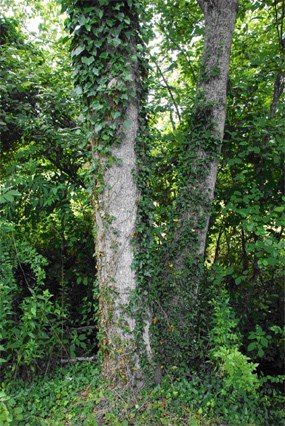
Invasive non-native plants, sometimes called exotic species, are common among native plant communities within the park. These unwelcome invaders interfere with the health of natural systems by replacing native species that provide food for animals dependent on their nutritive content. Exotic species also decrease biodiversity by out-competing and displacing native plants. Often, non-natives can grow more prolifically than natives because they do not have to contend with the natural controls that keep them in check in their native ranges. When exotic species invade a site, native species can be lost forever. Not all non-native species cause problems. Many are used in gardens to enhance and beautify the landscape. They stay where they are planted and their seeds and roots do not spread so much as to “take over”. However, others do, and these are the plants referred to as exotic species. There are 40 invasive exotic species at Carl Sandburg Home. Some of the most troublesome are Oriental Bittersweet, Japanese Honeysuckle, Japanese Stiltgrass, Asiatic Dayflower, Chinese Privet, Japanese Barberry, English Ivy, Common Periwinkle, Japanese Spirea, Multiflora Rose, Burning Bush and Autumn Olive. The Natural Resources team work throughout the year to reduce the presence of exotic species. The Southeast Exotic Plant Management Team assists the park with this ongoing process. |
Last updated: April 14, 2015
